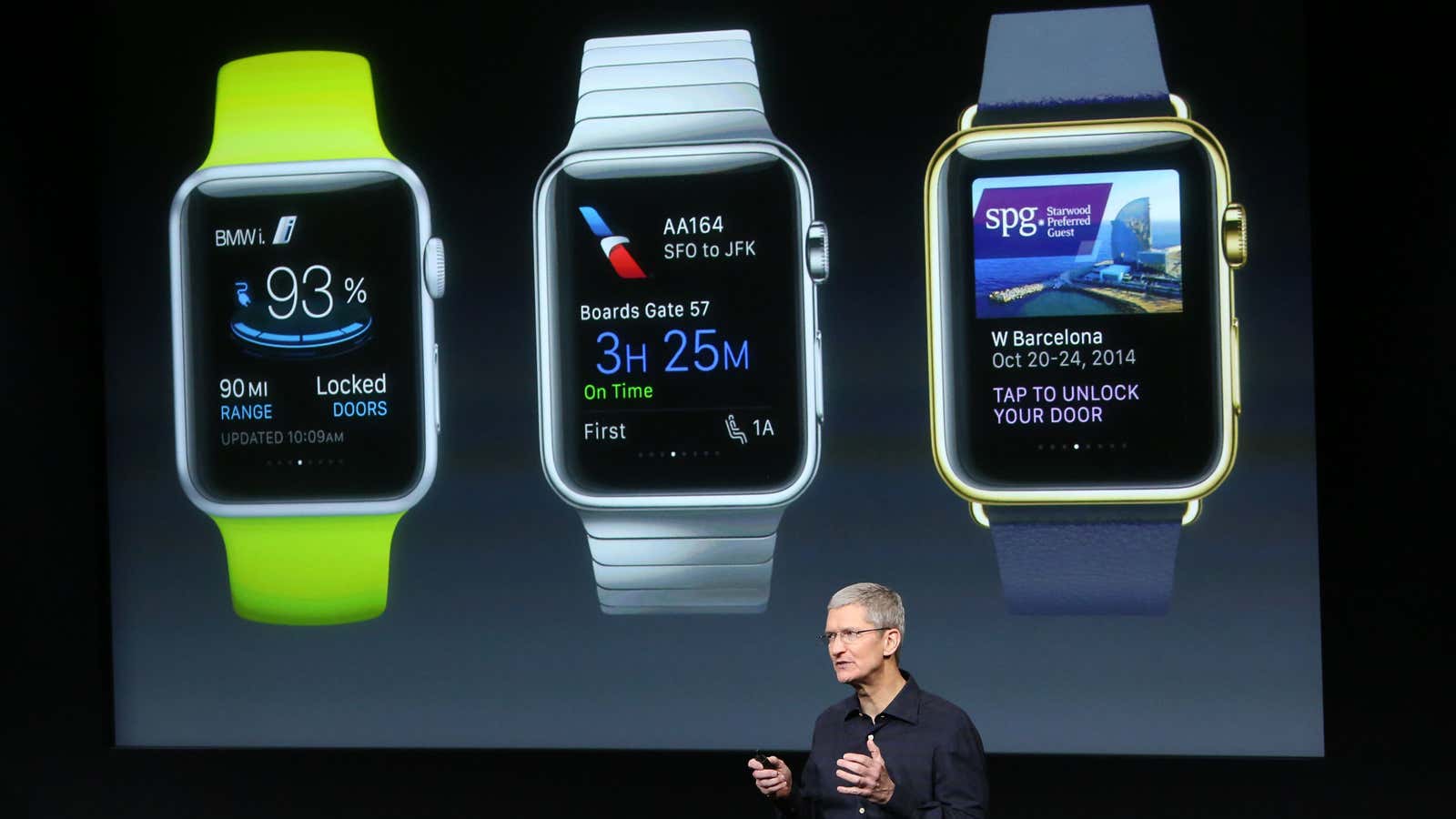Many of tech’s largest firms reported fourth-quarter earnings this week, including Apple, Microsoft, Google, Amazon, Yahoo, and Facebook. For the most part, results were as expected—nothing exceptionally high or embarrassingly low. That is, except Apple, which beat analysts’ sales estimates by a wide margin, thanks to one product alone: the new iPhone.
Apple shipped almost 75 million iPhones in the Christmas quarter. That was several million more than expected and beat its previous record—set the year before—by more than 20 million. The company’s overall sales nearly reached $75 billion for the quarter, up 30% over last year. The iPhone, with $51 billion in sales, represented nearly 70% of Apple’s overall business—the highest percentage ever, up from 56% the prior quarter.
A big part of the iPhone’s success can likely be attributed to one decision: To finally offer it in larger sizes, matching the phones that Android rivals, such as Samsung and Motorola, have made for years. On Apple’s earnings call, CEO Tim Cook said the company saw a record number of new iPhone customers and more people switching from Android than for any of the previous three iPhone versions.
Of course, now that Apple’s met the demand for larger phones, it risks disappointing investors next time. Surely, nothing else can deliver such a big jump in sales? But perhaps the shift to larger smartphones will serve a secondary purpose. Paul Kedrosky, the financial commentator, theorized this week that Apple has created a “portability deficit”—i.e., big phones are cumbersome. This, Kedrosky posits, will prove helpful as Apple starts selling its new iPhone accessory, the Apple Watch, this April.
This was published as part of the Quartz Weekend Brief. You can sign up for our email newsletters here.
